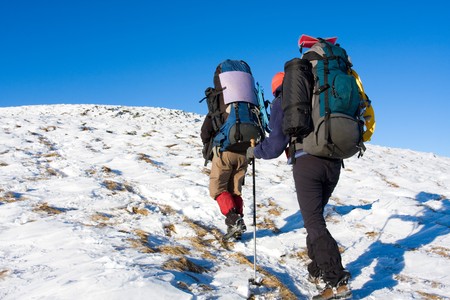Early Roots of Environmental Awareness Among U.S. Hikers
The Birth of Environmental Consciousness
In the late 19th and early 20th centuries, hiking was becoming a popular pastime for Americans seeking adventure and solace in the wild. As more people ventured into forests, mountains, and untouched landscapes, a new sense of responsibility began to grow within the hiking community. This period marked the start of environmental awareness among hikers, driven by both a love of nature and concerns about preserving these natural spaces for future generations.
The Influence of Naturalists and Wilderness Enthusiasts
Key figures like John Muir, often called the “Father of the National Parks,” played a huge role in shaping early attitudes toward nature. Muir’s writings and activism inspired thousands to appreciate and protect America’s wilderness areas. Groups such as the Sierra Club, founded in 1892, provided organized ways for hikers and nature lovers to get involved in conservation efforts.
Notable Early Influencers
| Name | Contribution |
|---|---|
| John Muir | Advocated for national parks; inspired a movement to preserve wilderness areas |
| Aldo Leopold | Pioneered the idea of a land ethic; promoted responsible stewardship |
| Gifford Pinchot | First Chief of the U.S. Forest Service; focused on sustainable use of forest resources |
The Formation of Hiking Clubs and Organizations
During this era, local hiking clubs began forming across the country. These groups were not only about enjoying the outdoors but also about protecting it. For example, the Appalachian Mountain Club (founded in 1876) encouraged its members to respect nature through organized hikes, trail maintenance, and advocacy for public lands.
Key Hiking Organizations Established Before 1920
| Organization | Year Founded | Main Focus |
|---|---|---|
| Appalachian Mountain Club (AMC) | 1876 | Hiking, conservation, outdoor education in New England region |
| Sierra Club | 1892 | Preservation of wilderness areas, environmental activism in California and beyond |
| Mazamas (Oregon) | 1894 | Mountaineering, hiking, protection of Pacific Northwest mountains and forests |
The Growth of a Shared Ethic
This early period set the stage for what would become a deeply rooted environmental ethic among American hikers. Their growing awareness led to more organized efforts to protect trails, reduce human impact on nature, and advocate for public access to wild lands. The seeds planted by these early enthusiasts would eventually blossom into a nationwide movement for environmental advocacy within the hiking community.
2. The Rise of Organized Hiking Clubs and Conservation Movements
As hiking became more popular across the United States in the late 19th and early 20th centuries, passionate outdoor lovers realized that protecting the country’s wild spaces required organized efforts. This led to the creation of influential hiking societies, most notably the Sierra Club and the Appalachian Mountain Club (AMC). These organizations not only brought together like-minded enthusiasts but also played a major part in shaping America’s environmental advocacy.
The Birth of Iconic Hiking Societies
The Sierra Club was founded in 1892 by legendary conservationist John Muir and a group of supporters in California. Their mission was clear: to explore, enjoy, and protect the mountains and wilderness areas of the West. Meanwhile, on the East Coast, the Appalachian Mountain Club was established in 1876 with a focus on exploring and preserving the Appalachian region. Both clubs quickly grew into powerful voices for conservation.
Pioneering Wilderness Preservation
These clubs were among the first to speak up for America’s wild places. They campaigned for the creation of national parks, lobbied against destructive development, and encouraged members to experience nature responsibly. Through guided hikes, educational programs, and hands-on trail work, they inspired generations of hikers to care about protecting public lands.
Key Contributions of Major Hiking Clubs
| Club | Year Founded | Main Focus Areas | Notable Achievements |
|---|---|---|---|
| Sierra Club | 1892 | Wilderness preservation, public education, policy advocacy | Helped establish Yosemite National Park, led campaigns for clean air/water laws |
| Appalachian Mountain Club (AMC) | 1876 | Trail building, land conservation, recreation access | Created and maintains over 1,800 miles of trails in the Northeast including parts of the Appalachian Trail |
Sustainable Trail Development
A vital part of these organizations’ work has been developing and maintaining trails so people can safely enjoy nature without harming it. Early trail crews set standards for sustainable trail design—like preventing erosion and minimizing habitat disruption—that are still followed today. Volunteers from these clubs continue to restore paths, build shelters, and teach others how to “leave no trace” during their hikes.
Cultural Impact on American Outdoor Life
The rise of organized hiking clubs changed how Americans think about their relationship with nature. By making outdoor recreation accessible while advocating for protection, groups like the Sierra Club and AMC helped turn environmental stewardship into a core value within the U.S. hiking community. Their legacy is seen every time someone steps onto a well-maintained trail or joins a local clean-up event—proof that enjoying America’s wild places goes hand-in-hand with taking care of them.

3. The Impact of Federal Policies and Wilderness Legislation
Federal policies have played a huge role in shaping the hiking community’s relationship with nature in the United States. One of the most important milestones was the passing of the Wilderness Act of 1964. This landmark law established a legal definition of “wilderness” and set aside millions of acres of pristine land for future generations. It marked a turning point, not just in conservation, but also in how hikers viewed their responsibilities on public lands.
How the Wilderness Act Changed Hiking Culture
The Wilderness Act didn’t just protect land—it inspired a new sense of stewardship among hikers. Suddenly, places people loved to explore were recognized as needing protection from overuse, pollution, and development. The act made hikers more aware that their actions could help preserve these wild spaces.
| Legislation/Policy | Main Focus | Impact on Hikers |
|---|---|---|
| Wilderness Act (1964) | Preserve wilderness areas “untrammeled by man” | Encouraged Leave No Trace ethics; limited motorized access; fostered respect for fragile environments |
| National Trails System Act (1968) | Create and maintain long-distance trails like the Appalachian Trail | Provided well-marked routes; promoted trail stewardship programs |
| Land and Water Conservation Fund (1965) | Fund parks and outdoor recreation projects nationwide | Expanded access to trails and green spaces; supported local advocacy efforts |
The Rise of Stewardship Roles Among Hikers
With these federal protections in place, hiking clubs and environmental organizations began to educate members about responsible land use. Programs such as “Leave No Trace” became popular, teaching hikers to minimize their impact by packing out trash, staying on trails, and respecting wildlife habitats. Volunteers started participating in trail maintenance and habitat restoration projects, making stewardship an essential part of American hiking culture.
Key Ways Policies Shaped Land Use Practices
- Restricted Access: Certain areas became off-limits to vehicles or even foot traffic during sensitive times to protect plants and animals.
- Education Efforts: Interpretive signs and ranger talks at trailheads explained why rules existed and how hikers could help.
- Civic Engagement: Many hikers got involved in letter-writing campaigns or public meetings to advocate for further protections.
The Ongoing Influence Today
The legacy of federal wilderness legislation continues today. Hikers are often at the forefront of advocating for new protected areas and better management practices. This ongoing partnership between policy-makers, park rangers, and outdoor enthusiasts has helped keep America’s wild spaces open—and wild—for everyone to enjoy.
4. The Emergence of Outdoor Ethics Initiatives
Growth of Educational Campaigns
As hiking became more popular in the United States, it brought about new challenges for the environment. Trails saw more foot traffic, and sensitive ecosystems began to feel the impact. To address these concerns, educational campaigns started to take root. Organizations, national parks, and local hiking clubs began to promote messages encouraging hikers to respect nature and minimize their environmental footprint.
Leave No Trace: A Cornerstone Philosophy
One of the most influential philosophies to emerge was Leave No Trace. Established in the 1990s, Leave No Trace (LNT) provided a simple set of guidelines that anyone could follow. These principles help hikers understand how their actions affect natural spaces and offer practical steps for responsible recreation. The seven LNT principles have since become a gold standard across the country:
| LNT Principle | Description |
|---|---|
| Plan Ahead and Prepare | Be ready for your hike to avoid emergencies and reduce impact. |
| Travel and Camp on Durable Surfaces | Stick to established trails and campsites. |
| Dispose of Waste Properly | Pack out all trash, leftover food, and litter. |
| Leave What You Find | Avoid picking plants or disturbing cultural artifacts. |
| Minimize Campfire Impact | Use camp stoves instead of fires when possible. |
| Respect Wildlife | Observe animals from a distance and don’t feed them. |
| Be Considerate of Other Visitors | Share the trail respectfully with others. |
Adoption by the Hiking Community
The hiking community quickly embraced these outdoor ethics. Trailhead signs, ranger talks, and volunteer-led workshops began featuring LNT messaging. Social media influencers and hiking groups also played a role in spreading awareness. Over time, following Leave No Trace became part of American hiking culture—something expected from both beginners and seasoned adventurers alike.
Other Initiatives Supporting Responsible Recreation
While Leave No Trace is the most well-known initiative, other programs like “Tread Lightly!” (focused on motorized recreation) and “Pack It In, Pack It Out” campaigns also gained traction. These efforts helped create a shared understanding that preserving trails and wild places is everyone’s responsibility.
5. Modern Advocacy, Social Media, and Community Engagement
The Digital Age: A New Era for Environmental Advocacy
The U.S. hiking community has entered a new era of environmental advocacy thanks to digital technology and social media. Today, hikers are more connected than ever before, with online platforms making it easier to spread awareness, organize events, and mobilize support for conservation causes.
Grassroots Activism Goes Online
Grassroots activism in the hiking world has moved from local trailheads to global online networks. Social media groups, forums, and mobile apps allow hikers to share information about threatened trails, endangered species, and upcoming clean-up events. Hashtags like #LeaveNoTrace and #ProtectOurTrails have helped unite thousands of outdoor enthusiasts behind common goals.
Popular Platforms for Hiker Advocacy
| Platform | Main Use | Impact on Advocacy |
|---|---|---|
| Sharing photos, raising awareness | Highlights conservation needs visually; encourages responsible recreation | |
| Facebook Groups | Organizing events, discussions | Connects local communities; spreads news quickly |
| Reddit (r/hiking) | Information exchange, Q&A | Crowdsources advice on best practices and environmental issues |
| Trail Apps (AllTrails, Gaia GPS) | User trail reports, alerts | Helps identify areas needing attention or protection; organizes clean-ups |
Promoting Inclusivity and Diversity on the Trails
The modern hiking community is also focused on making outdoor spaces accessible to everyone. Organizations like Outdoor Afro and Latino Outdoors use digital outreach to invite underrepresented groups into environmental advocacy. By sharing stories online and hosting inclusive group hikes, they help ensure that all voices are heard in conservation efforts.
Technology as a Tool for Conservation Action
Technology is not just about connection—its also about action. Mapping apps help hikers report trail conditions or illegal dumping directly to park managers. Crowdfunding platforms raise money for trail maintenance or habitat restoration projects. Virtual campaigns can gather signatures for petitions to protect public lands faster than ever before.
How Hikers Use Technology for Conservation Causes
| Tool/Method | Description | Example Actions |
|---|---|---|
| Crowdfunding Sites (GoFundMe) | Raising funds online for specific projects | Restoring damaged trails; supporting wildfire recovery efforts |
| Email Newsletters & Alerts | Keeps members informed about urgent issues or volunteer needs | Mobilizing volunteers for rapid response clean-ups after storms or vandalism incidents |
| Petition Platforms (Change.org) | Collecting digital signatures for policy change | Pushing lawmakers to protect wilderness areas |
The Power of a Connected Community
The evolution of environmental advocacy in the U.S. hiking community continues as technology brings more people together. Whether through online education, organizing trail work days via apps, or amplifying diverse voices across social media, hikers are proving that caring for nature can start with just one click—but leads to real-world impact.


